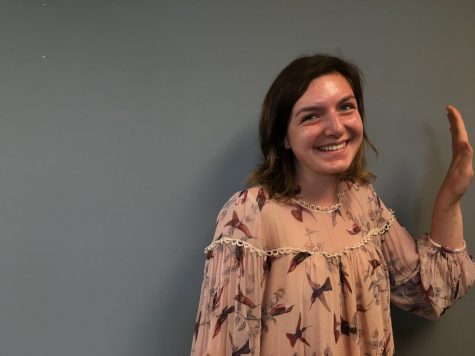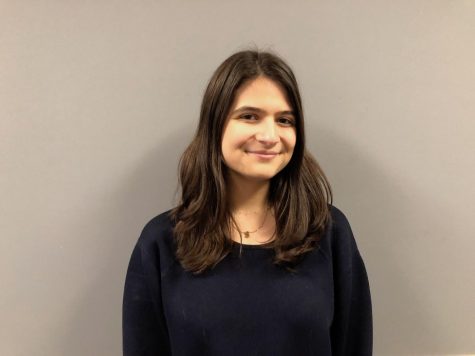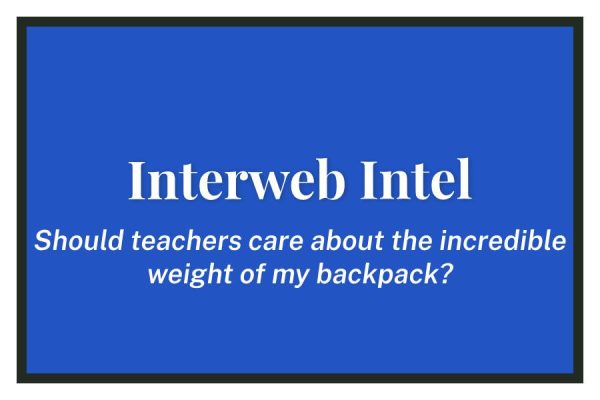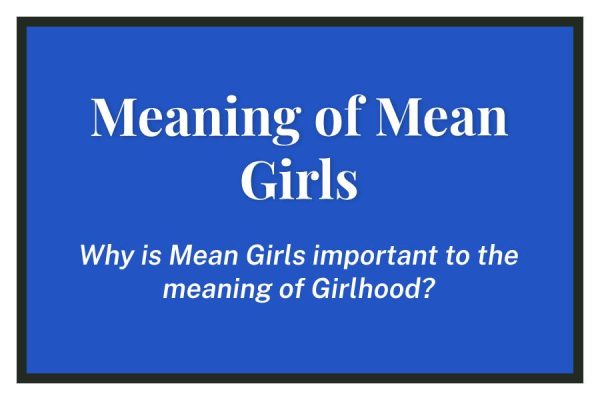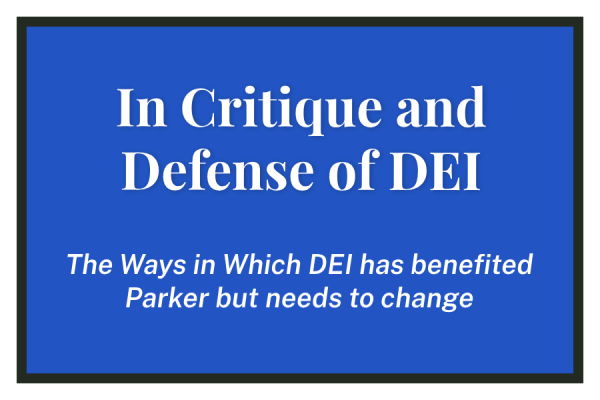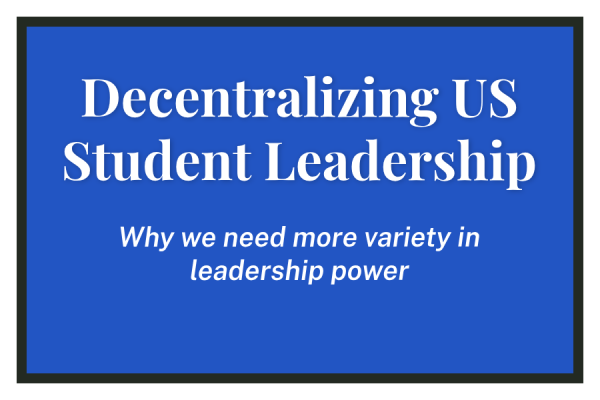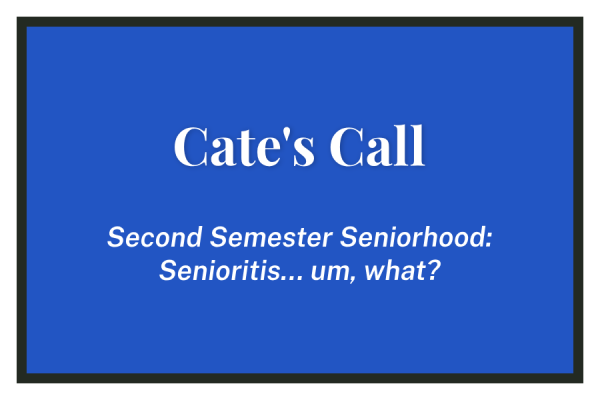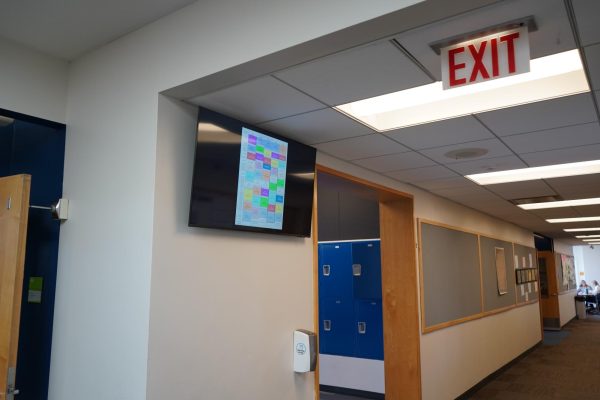Head to Head: Should Parker Expand?
Expanding the School Means More than Just Numbers
by Grace Buono
It seems that almost every single school day, whether in the lunch line, in a Morning Ex, or in a class, there are discussions on the lack of diversity, economic differences, or political beliefs that exist within Parker. Then each winter, new students are admitted into each grade, and instead of trying to solve–most directly–the problems that students and teachers discuss each day, the school misses its chance by admitting more of the same people.
Statistically speaking, a student who is an alum or sibling is going to be admitted into the school over a new family. The admissions page on the Parker website states that “we give preferential consideration to siblings and equivalent preferential consideration to children of faculty and staff. Alumni applicants are given some special consideration because of their previous association with the school, but with a lesser priority than that given to siblings or faculty children.”
To me, there’s something wrong with that. Of course the school needs to support families who have been a part of the Parker community for many years, and students with siblings should be able to go to the same school, but this policy shouldn’t get in the way of new applicant families.
It’s not wrong to give some priority to affiliated students each admission season–teachers should be able to send their children to the school at which they teach, alumni should be able to stay connected with their alma mater, and siblings should have a chance to attend the same school–but if fewer spots were given to affiliated students, and each grade were to expand even by just a few students, the school as a whole would welcome new-to-Parker families and so become open to a whole new set of ideas, opinions, and beliefs.
But expanding by just a few students isn’t going to solve any problems. It’s going to take significant reform to the affiliated student policy to ensure a wider range of diversity among the student body within every grade JK-12.
Because picking sides between affiliated families and new-to-Parker families is irrational and will get the school nowhere, expansion is an in between solution.
Expanding by just 10 students per grade would bring the average high school class from 85 students to 95 students. That’s more spots for students outside of Lincoln Park, from varying economic backgrounds, and with different political beliefs.
If Parker really wants to be–and not just declare itself–a diverse school in regards to race, ethnicity, socioeconomic status, and political stance, then the student body needs to reflect that diversity. If the school is ready to embark on fulfilling its mission to be this type of community, then it takes commitment from all the administration, parents, students, and admissions officers.
Affiliated parents and families should know that while their association to the school is important, it is equally important to bring in new faces and ideas into each and every classroom.
This isn’t just for the high school either. I think it’s even more important to open up spots for the lower school–especially in Junior Kindergarten. What better way is there to expand the school than starting from the very first school year Parker offers? By admitting a larger group of students to JK, the school would open up new windows for every grade to come.
One of the most essential parts to a Parker education is the student-teacher dynamic that exists within the school. No expansion of any kind should be undertaken that would eliminate the one-on-one student teacher relationships that are developed throughout a Parker experience of any duration.
According to the admissions viewbook found on the website, there is currently an 8:1 student to teacher ratio throughout the school. An increase in students should by no means change this ratio. Whether it be through hiring new teachers or physically expanding the building, that ratio should remain a core part of what makes Parker the school it is.
The expansion of Parker feels rather loose and detached from its mission. Opening up the school could come in many different shapes and forms. It could include adding more students to each grade to make up for the large number of affiliated students coming in each year, or expanding the volume of less affiliated students within a grade in order to make more room for new families. These may in fact go hand-in-hand, but no one can argue against the huge benefits the school would reap if it were open to a larger variety of identities, opinions, and beliefs from the Chicagoland area.
Why We Should Not Increase the Number of Students
by Sophia Saker
On a sunny morning in late August of 2015, I, along with the other 85 members of my class, anxiously entered Parker with a bag full of notebooks, folders, and binders ready to start my first day of upper school. Feeling a slight cramp in my shoulders from all the books I was carrying, I looked forward to the relief I would feel when I could set them in a locker.
But instead, our teachers frantically asked for volunteers to give up their lockers. There were around three lockers too few to fit the entire class.
Up until second semester, those three freshmen lugged all their binders, books, and coats to each class until three lockers were built in a nook adjacent to the freshman locker area.
If we add more students to the student body, there’s only a limited amount of nooks and crannies in the school for lockers to go in–that will be one of the many complications we face if we increase in size.
Seldom do you find a school in the Chicagoland area in which students are able to learn in such an interpersonal learning environment such as the classes here at Parker. Parker fosters unique learning experiences that would be essentially lost if the student body were to increase dramatically in size. What differentiates Parker from any other school in the city is not just the progressive education students receive here but the close-knit community into which students are welcomed.
One of Parker’s most unique aspects is the small class sizes, but more specifically the student to teacher ratio. Many parents choose to send their children here due to the attention and accommodations they will receive from being in a more personalized learning environment. With smaller class sizes, teachers are able to get to know their students and better adjust to each child’s needs.
As it stands now, a class is considered full when there are 18 students enrolled, but most classes and electives tend to have fewer members. In each of my math and science classes this year there are fewer than ten students.
This privilege of being in smaller classes has allowed my teachers to get to know my work better. My experience in the classroom feels personalized and overall very engaging. I, and many other Parker students, would lose some aspects of the personalized learning experience if the student to teacher ratio were to increase. Even though five or ten more students per grade may not seem like large numbers, when you factor that kind of shift into a learning environment, it makes all the difference.
One may argue that the simple solution is to add more teachers along with the added students to keep our ratio relatively the same. But, realistically, that is more easily said than done.
Logistically, we would need to find suitable teachers for Parker, and then we’d have to take into account their salaries and the physical classrooms in which they would teach. More teachers means more classes must be added into the course list, which could lead to a need for additions on the physical size of our school.
For all-school Morning Ex’s such as the Corinthians MX, the entire school squeezes into the auditorium, which seats 938 people, not to mention risers onstage. As it stands now, there is just enough room to fit all the students, teachers, faculty, and other members of the Parker community who might attend.
This is not to say that I would like to prevent students from attending this school who are eager to get a Parker education, but I do think it is important to acknowledge the repercussions that would result from expanding the size of our school.
I consider myself extremely fortunate to be–and have been–able to attend a school such as Parker, and I hope as many others would be able to have this opportunity, but a crucial part of my experience has been the close-knit community I was welcomed into in 2012. I’d hate to see that change.
If we are going to do this, we better do it right. Expand in student size, and we have to expand in the physical size of our school, teachers, and staff. Where? How?
It’s not just the number of students that would increase. To maintain the learning experience students get now, we would need to adjust the entire school. If we as a community are willing to invest in these changes, changes that ensure students feel welcomed into a close-knit community, then by all means, I am for it.
But if we cannot ensure that these aspects of school life at Parker stay intact for all students if we increase in size, then doing so would mean that students will lose what makes a Parker education so distinctive and so valuable.
